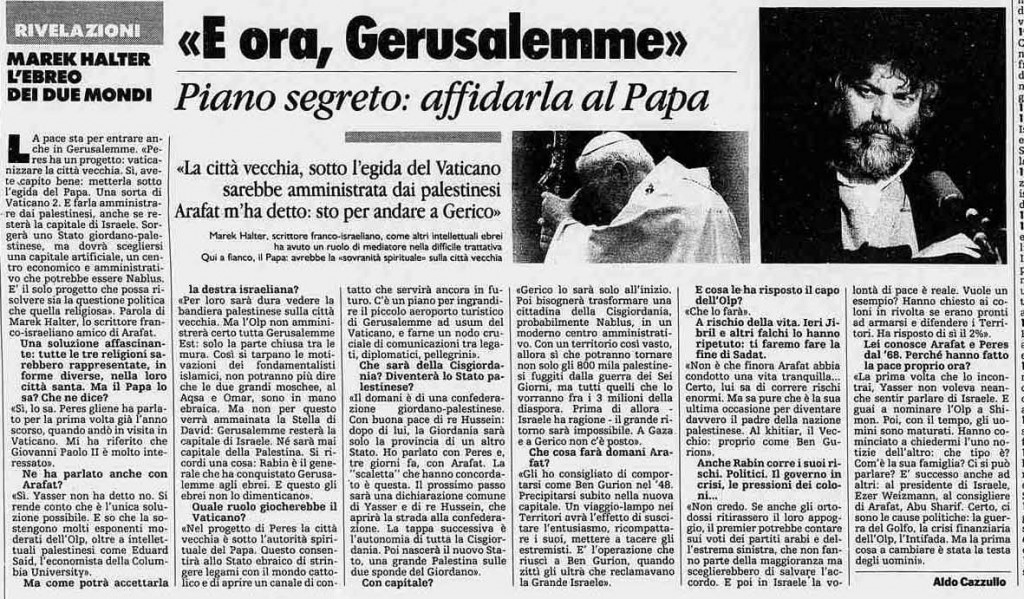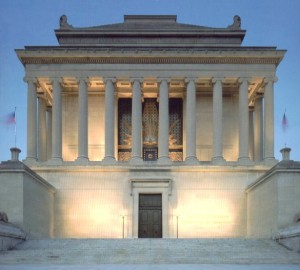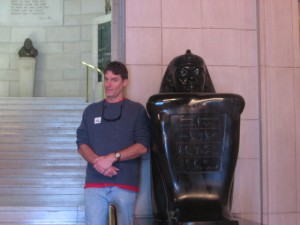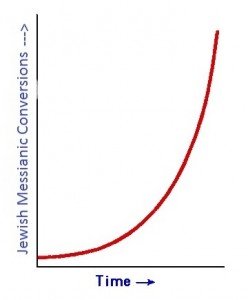 Historicism has its roots in the twelfth century when a Catholic mystic named Joachim of Fiore reasoned that because God is a Trinity (Father, Son, and Holy Spirit), then history itself is also a trinity of three ages. Later, Martin Luther first struggled with the book of Revelation writing in his first German Bible that “Christ is neither taught nor known in it.”[1] Only a few years later in 1530, Luther changed his mind and wrote of it as a map of history. This quickly became the dominant view. Since the reformation, there has been a large body of biblical scholarship which posits the events in the books of Revelation as milestones in Church history. Many think the shift away from this paradigm is a product of the Jesuit Counter Reformation. After all, the destiny of the Church as the bride of Christ is arguably God’s primary focus in the book. Even so, it is important to recognize that although it was written for us, it was not originally to us. It was first meant to encourage the first-century churches that were enduring persecution and discouragement. Now, two thousand years later, we still can be encouraged that Christ will return to make things right. Where the seals, trumpets, and vials have been progressing since the first century in historicism, the futurist approach places the majority of the book of Revelation’s judgments in the seven year Great Tribulation scenario. Traditionally, futurism and historicism are viewed as opposing camps but we think that is a drastic oversimplification. It seems that eschatology is best held with a loose grip.
Historicism has its roots in the twelfth century when a Catholic mystic named Joachim of Fiore reasoned that because God is a Trinity (Father, Son, and Holy Spirit), then history itself is also a trinity of three ages. Later, Martin Luther first struggled with the book of Revelation writing in his first German Bible that “Christ is neither taught nor known in it.”[1] Only a few years later in 1530, Luther changed his mind and wrote of it as a map of history. This quickly became the dominant view. Since the reformation, there has been a large body of biblical scholarship which posits the events in the books of Revelation as milestones in Church history. Many think the shift away from this paradigm is a product of the Jesuit Counter Reformation. After all, the destiny of the Church as the bride of Christ is arguably God’s primary focus in the book. Even so, it is important to recognize that although it was written for us, it was not originally to us. It was first meant to encourage the first-century churches that were enduring persecution and discouragement. Now, two thousand years later, we still can be encouraged that Christ will return to make things right. Where the seals, trumpets, and vials have been progressing since the first century in historicism, the futurist approach places the majority of the book of Revelation’s judgments in the seven year Great Tribulation scenario. Traditionally, futurism and historicism are viewed as opposing camps but we think that is a drastic oversimplification. It seems that eschatology is best held with a loose grip.
With exception of the heterodox full preterist view, all interpretations are futurist to one degree or another. Even historicists  are necessarily futurists in regard to Christ’s return and the battle of Armageddon. Also many (like Spurgeon) are premillennialists who allow for a future restoration of Israel. On the other side, even staunch dispensationalists like John Walvoord have historicist elements in their hermeneutic. Concerning the letters to the seven churches in chapters two and three of the book of Revelation, he writes:
are necessarily futurists in regard to Christ’s return and the battle of Armageddon. Also many (like Spurgeon) are premillennialists who allow for a future restoration of Israel. On the other side, even staunch dispensationalists like John Walvoord have historicist elements in their hermeneutic. Concerning the letters to the seven churches in chapters two and three of the book of Revelation, he writes:
Many expositors believe that in addition to the obvious implication of these messages the seven churches represent the chronological development of church history viewed spiritually. They note that Ephesus seems to be characteristic of the Apostolic Period in general and that the progression of evil climaxing in Laodicea seems to indicate the final state of apostasy of the church. This point of view is postulated upon a providential arrangement of these churches not only in a geographical order but by divine purpose, presenting also a progress of Christian experience corresponding to church history. As in all scriptural illustrations, however, it is obvious that every detail of the messages addressed to these particular churches is not necessarily fulfilled in succeeding periods of church history. What is claimed is that there does seem to be a remarkable progression in the messages. It would seem almost incredible that such a progression should be a pure accident, and the order of the messages to the churches seems to be divinely selected to give prophetically the main movement of church history.[2]
Whereas Walvoord places the events of the rest of the book into the seventieth week of Daniel (a future seven-year tribulation period), the historicist school sees the seals, trumpets, and bowls as the unraveling of history stretched out until Christ’s return. As a classic representative example of the historicist approach to the book of Revelation, Irish Protestant preacher, astronomer and author, Henry Grattan Guinness, is good place to begin. He was a popular evangelist in the Evangelical awakening preaching to thousands during events like the Ulster Revival of 1859. He was responsible for training and sending hundreds of missionaries all over the world. He also wrote extensively on the historical interpretation of prophecy. He preferred to call it the presentist interpretation:
The second or PRESENTIST interpretation, is that historic Protestant view of these prophecies, which considers them to predict the great events to happen in the world and in the church, from St John’s time to the coming of the Lord; which sees in the Church of Rome, and in the Papacy, the fulfillment of the prophecies of Babylon and of the Beast, and which interprets the times of the Apocalypse on the year-day system. This view originated about the eleventh century, with those who even then began to protest, against the growing corruptions of the Church of Rome.[3]
So the issue is not really whether one is a futurist or historicist, it is where one draws the dividing line. Because it is not possible to know where this line is with certainty, we suggest there is plenty of room to allow for elements of both views. In the soon to be released book Petrus Romanus we suggest a hybrid approach which reconciles the most coherent elements of both views.
As an example of a modern historicist hybrid approach, I suggest John Piper’s sermon The Prayers of the Saints and the End of the World:
So Jesus begins to open the seals of the scroll of history. And with the opening of each seal, a vision is given to John not of the actual end of the world—that comes when the scroll itself is opened after all the seven seals are taken off its outer edge (the seven trumpets and seven bowls)—but what John sees is, I think, what Jesus called in Mark 13:8, “the beginning of the birth pangs”—the kinds of things in history that lead up to the end and mark this age with increasing intensity. Jesus said, “For nation will arise against nation, and kingdom against kingdom; there will be earthquakes in various places; there will also be famines. These things are merely the beginning of birth pangs.
http://www.desiringgod.org/resource-library/sermons/the-prayers-of-the-saints-and-the-end-of-the-world
Next week we will examine some of the strengths and weaknesses of both schools in our quest for the most accurate interpretation.
——————————————————————————————————————-
[1] Craig R. Koester, “The Apocalypse: Controversies and Meaning in Western History” The Great Courses, (Chantilly, Virginia: The Teaching Company 2011), 102.
[2] John F. Walvoord, The Revelation of Jesus Christ (Galaxie Software, 2008), 52.
[3] Henry Grattan Guinness, The Approaching End of the Age, 8th edition (London: Hodder and Stoughten, 1882), 94.














